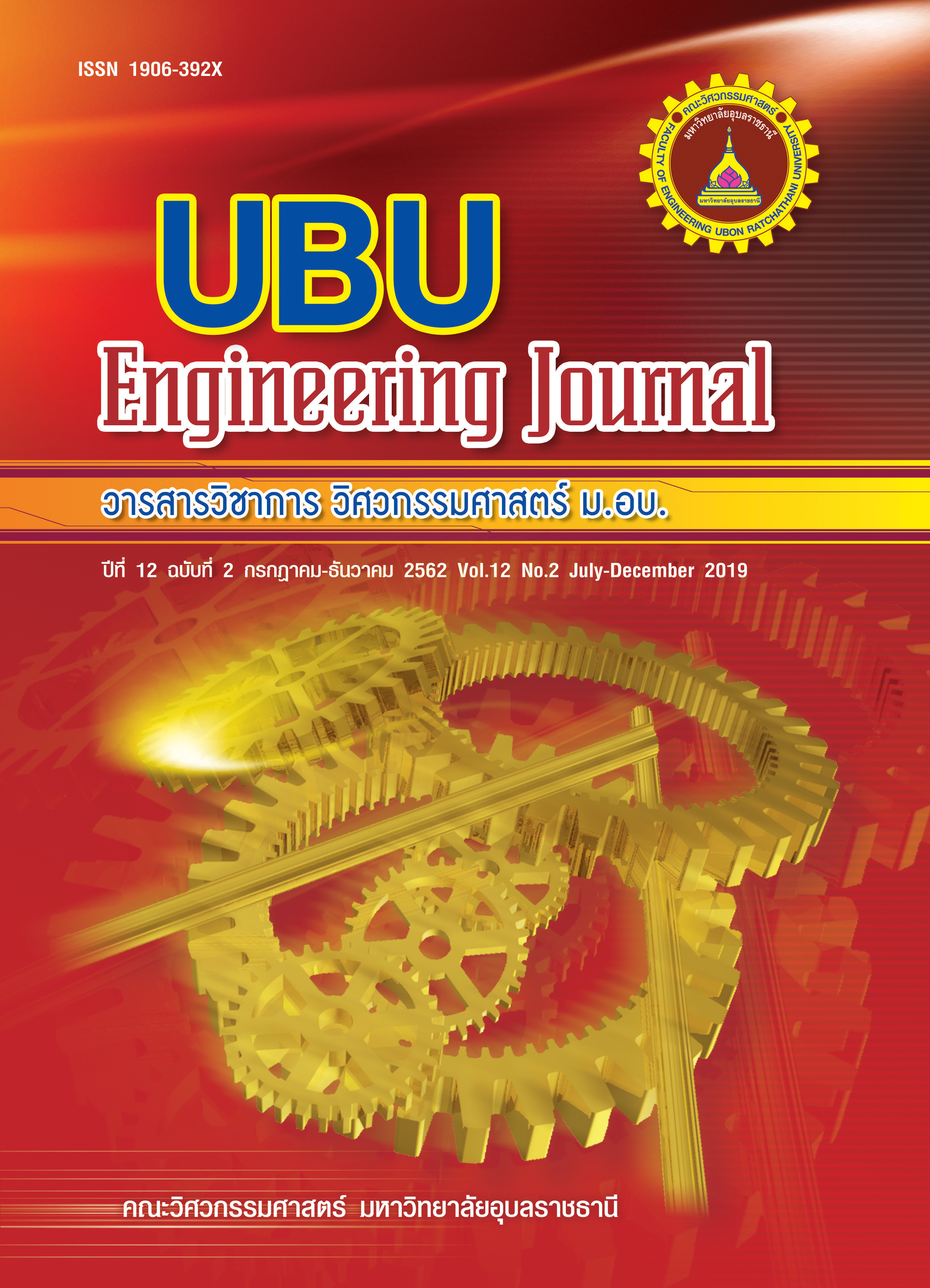ผลของรูปแบบการร้าวในคอนกรีตต่อพฤติกรรมของระบบฝังยึดแบบใช้สารยึดเหนี่ยว
Main Article Content
Abstract
This research aims to study the effects of cracked concrete that affects the adhesive anchoring system using a three-dimensional finite element model. Adhesive anchoring system under the pull-out force was modeled under cracked condition with different vertical cracks zone. The failure response of anchor model, adhesive model and concrete model are defined failure response types Ductile Damage, Shear Damage and Concrete Damage Plasticity Model respectively. For the model of adhesive/concrete interface are used cohesive elements and defined failure response type Traction-Separation Behavior. The results showed that when the position of cracked in concrete is deep, their behavior and the pull-out strength of the adhesive anchor was closed to the case of adhesive anchor in the uncracked concrete. The effect of the crack zone was increased when the cracks were closed to the top surface of the concrete. The cracks under the embedding phase do not affect the behavior and strength of the system. It also found that increasing of the cracked plane of one-plane and two-plane would result in the reduction of maximum pull-out strength by 25% and 39% respectively.
Keywords
Finite element model; Adhesive anchoring system; Cracked concrete
Article Details
References
[2] Cook, R.A., Kunz, J., Fuchs, W., and Konz, R. 1998. Behavior and Design of Single Adhesive Anchors under Tensile Load in Uncracked Concrete. ACI Structural Journal, 95-S2: 9-26.
[3] Todd Marshall Davis. 2012. Sustained Load Performance of Adhesive Anchor System in Concrete. Doctor’s Thesis: University of Florida.
[4] Eligehausen, R. and Appl, J. 2007. Behavior and Design of Fastening with Bonded Anchors : Numerical Analysis and Experimental Verification. Fracture Mechanics of Concrete and Concrete Structures Volume 2: Design, Assessment and Retrofitting of RC Structures, Catania. London: Taylor & Francis Group, S. 643 – 654.
[5] Sakla, SS. and Ashour, A.F. 2005. Prediction of tensile capacity of single adhesive anchors using neural networks. Computers and Structures, 83: 1792–1803.
[6] McVay, M.C., Cook, R.A. and Krishnamurthy, K. 1996. “Pullout Simulation of Postinstalled Chemically Bonded Anchors.” Journal of Structure Engineering. 122: 1016-1024.
[7] ภาคิณ ลอยเจริญ, เกรียงศักดิ์ แก้วกุลชัย และกิตติศักดิ์ ขันติยวิชัย. 2562. แบบจำลองไฟไนต์เอลิเมนต์สำหรับการประเมินกำลังและพฤติกรรมการวิบัติของสมอยึดแบบใช้สารยึดเหนี่ยวในคอนกรีตร้าวและไม่ร้าว. วารสารวิทยาศาสตร์และเทคโนโลยี มหาวิทยาลัยอุบลราชธานี; 2019. (Under review)
[8] Krishnamurthy, K. 1996. Development of a Viscoplastic Consistent Tangent FEM Model with Applications to Adhesive Bonded Anchors. PhD Dissertation, Department of Civil Engineering, The University of Florida.
[9] Meszaros, J. 2002. Tragverhalten von Einzelverbunddübeln unter zentrischer Kurzzeitbelastung. Dissertation in Vorbereitung, Institut für Werkstoffe im Bauwesen der Universität Stuttgart.
[10] Eligehausen, R., Mallée, R. and Silva, J. 2006. Anchorage in Concrete Construction. First edition, Ernst & Sohn GmbH & Co. KG, Published.
[11] Dassault Systèmes Simulia Corp. 2016. ABAQUS Analysis User’s manual. RI, USA.
[12] ACI Committee 318-11. 2011. Building Code Requirements for Reinforced Concrete and Commentary. American Concrete Institute, Detroit, MI, USA.: 417-463.
[13] Carreira D.J. and Chu, K.H. 1985. Stress-Strain Relationship for Plain Concrete in Compression. ACI Journal, 82-72: 797-804.
[14] Carreira D.J. and Chu, K.H. 1986. Stress-Strain Relationship for Plain Concrete in Tension. ACI Journal, 83-3: 21-28.
[15] Hilti Co, Ltd. 2017. Hilti Anchor Systems. http://www.hilti.co.th. Accessed 14 February 2017. (in Thai)

